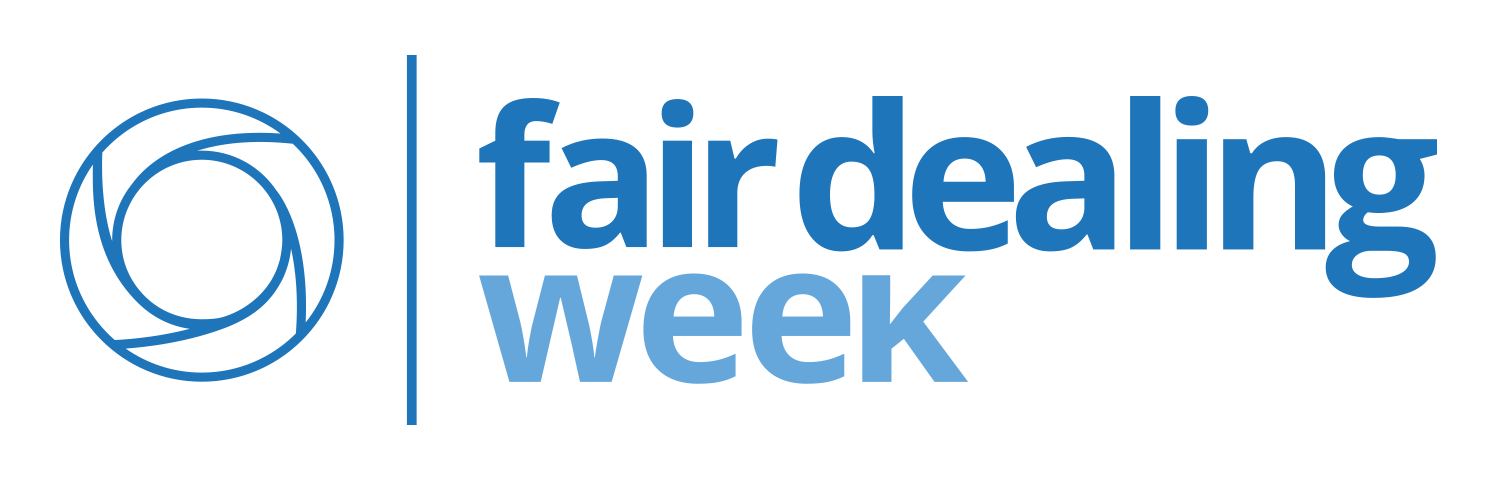
Copyright law must maintain a balance between the interests of the creators to control and benefit economically from their works and the interests of users to benefit from accessing and using those works. It is through this balance that copyright law can serve the overall public interest. Getting this balance right can be tricky, and the element that is critical to maintaining this balance is fair dealing. In Canadian copyright law, fair dealing is the great equalizer.
Recently, the Federal Government began its formal review of the Copyright Act, and fair dealing rights will be an important consideration. Fair dealing has been specifically targeted by publishing industry lobbyists in anticipation of the review, particularly as applied for the purpose of education. This is a critical time for those who benefit from educational fair dealing to ensure their perspectives are heard and to ensure that those conducting the review appreciate the broad public interest in a robust fair dealing provision.
There are reasonable limitations on when and how materials can be used under fair dealing, but most of these are not set out explicitly in the Copyright Act. To apply fair dealing, there are only two determinations to be made: whether the use or dealing is for one of the listed purposes (and thus in the public interest), and whether the use is fair in light of the overall circumstances. For a provision that covers the full range of works that can be protected by copyright, and the full range of possible uses of those works, this simple construction of s.29 is quite elegant. If you can make a compelling case that a particular use of a copyright-protected work is both for an appropriate purpose and that the use is fair, then you are good to go. Technology can evolve, new approaches to how works are consumed can be developed, but fairness remains the standard.
Of course, fairness is contextual and what is fair can change with changing circumstances. With all that flexibility and adaptability comes the requirement to make determinations around fairness in specific circumstances, and making such determinations is a matter of interpretation. For post-secondary institutions that must make a large number of such interpretations over a range of circumstances and want those to be made quickly and uniformly, finding an efficient path to consistently fair outcomes can be challenging. Fair dealing guidelines have been developed to address this challenge.
Before looking more deeply into how post-secondary institutions apply fair dealing, it is important to see the broader picture of how institutions use copyright-protected content. The faculty, staff and students of post-secondary institutions are significant creators of copyright-protected materials as well as being significant users of copyright-protected materials. At an individual level, faculty members and students purchase books and subscribe to online content. At an institutional level, libraries buy and license an enormous amount of copyright-protected content, including book purchases, eBooks, and large collections of scholarly journals and other licensed databases. Additionally, institutions purchase transactional licenses for the reproduction and distribution of specific materials that cannot be made available to students under fair dealing. In all these cases, the rights-holders are appropriately compensated through the sale or license fee. Use of materials by institutions under fair dealing should be considered in this broader context.
To consider how fair dealing is applied at the University of Alberta, it is necessary to distinguish between private copying and institutional copying. Much of the use and copying of copyright-protected materials by faculty and students is private copying, which, if it is done for the purpose of private study or research, may properly fall under fair dealing. The responsibility for determining fair dealing in the case of private copying is generally left to the individual user. The six-factor test, as outlined by the Supreme Court of Canada in the CCH case, and excerpted here, is the best guide for individuals to make a determination regarding fair dealing.
The UAPPOL Use of Copyright Materials Policy and Procedure apply only to institutional copying, i.e., copying that takes place on behalf of the institution. The University of Alberta Fair Dealing Guidelines are intended to apply only in cases of institutional copying.
It would be impractical for an institution to separately consider each case of copying and to perform a separate six-factor test on each to determine whether it falls under fair dealing. Nevertheless, when such material is to be reproduced and distributed on behalf of an institution, it seems reasonable for the institution to provide some guidance to those faculty and staff members who will be making this determination and overseeing this reproduction and distribution. The institutional fair dealing guidelines provide this guidance. Such guidelines are in part to protect the individual faculty or staff member who is copying material on behalf of the institution, because so long as their copying is within the institutional guidelines, they are meeting their obligations under the Policy.
So what are these institutional guidelines really trying to do? Guidelines are trying to speak to the general case and approximate the results of an analysis across a broad range of expected types of cases. The guidelines are a quick and simple-to-apply tool for determining whether a use would fall under fair dealing. At a university, the fair dealing guidelines are anticipating the kind of uses that are more common in that setting, and the result of applying the guidelines properly should be a safe harbour when it comes to fairness.
Users should not lose sight of the purpose and intent of the guidelines, but neither should institutions. The guidelines are an efficient tool to cover a broad range of cases, but they were never intended to be a replacement for a full fair dealing analysis. There will be cases, outside of operational norms or routine circumstances, where a full fair dealing analysis may be warranted. If institutions see the guidelines as defining the full scope and limits of fair dealing in all circumstances, then their rights have effectively been eroded.
For those publishers and their lobbyists who are critics of fair dealing, it is important to distinguish between their being critical of specific applications of fair dealing, which could ultimately be found not to be fair, and their being critical of fair dealing itself. Interpretations of fairness can be flawed, and any unfair outcomes of such flawed interpretations should be corrected. That is how the statute is meant to operate; fairness remains the standard.
Respecting and maintaining the balance in copyright law through the appropriate application of fair dealing is unquestionably “for the public good.” Nevertheless, certain groups don’t like how fair dealing rights are being exercised and are lobbying the Federal Government to restrict these rights through the review of the Copyright Act. If you value the preservation of fair dealing in general and for post-secondary education in particular, make sure your voice is heard. Don’t sit on the sidelines and allow fair dealing to be weakened, upsetting the balance of copyright law in Canada.
Fair Dealing Week 2018 will run from February 26 to March 2. In recognition, the Canadian Association of Research Libraries (CARL) is collecting fair dealing testimonials. If you have a story about your experience with fair dealing and how you and the public benefit from it, please consider submitting a testimonial. Additionally, the University of Alberta Copyright Office is hosting an event on Wednesday, February 28, also as part of Fair Dealing Week. More information about that event and how to register to attend is available here.
For additional information about copyright at the University of Alberta, assistance with fair dealing analyses, or to arrange an information session for your department or faculty, check out the Copyright Office website, or email our help desk at copyright@ualberta.ca.

Adrian Sheppard — Director, Copyright Office
Adrian has been the Director of the University of Alberta’s Copyright Office since April 2015. One role of the Copyright Office is to educate and inform U of A students, faculty and staff on issues related to copyright. Adrian has an LL.B. from the University of Victoria.
Note: This post is intended to provide information and perspective about copyright issues, but should not be considered as legal advice.